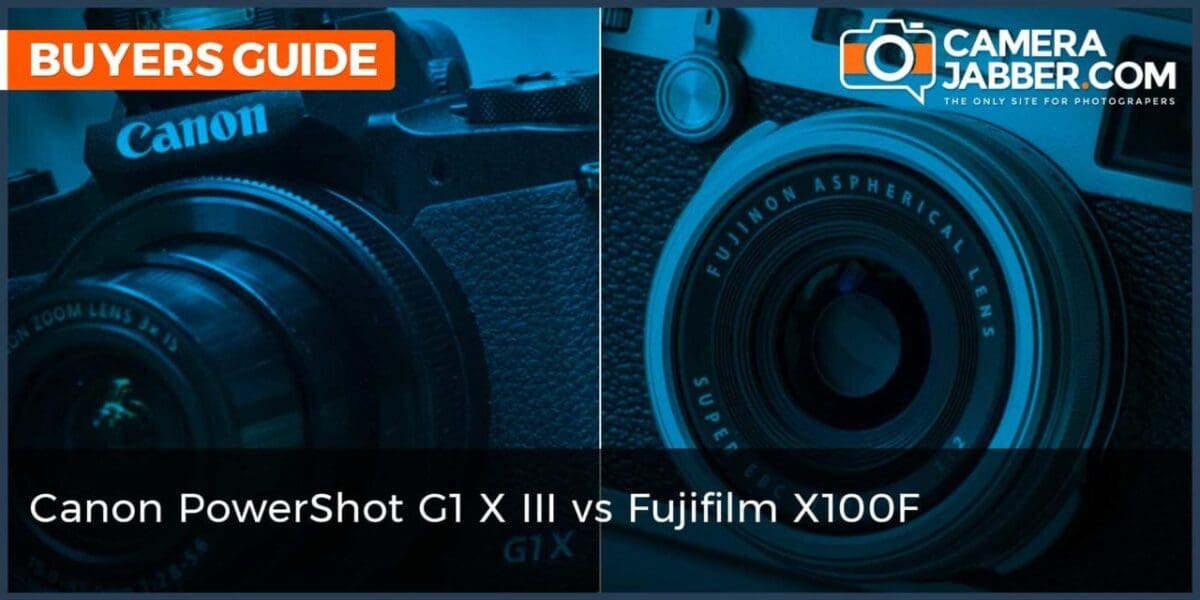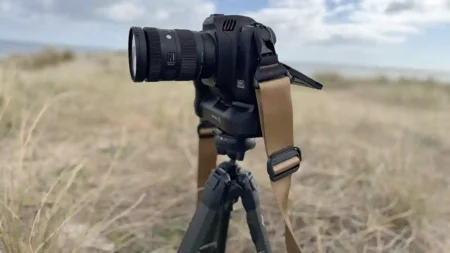If you’re interested in having a compact camera with an ASP-C format sensor, there’s a pretty limited collection of models currently available, the Fujifilm X100F and Ricoh GR II, and now the new Canon PowerShot G1 X Mark III. The Ricoh GR II is a decent camera but it hasn’t proved as popular as Fujifilm’s X100-series. Therefore it seems that theCanon G1 X Mark III’s main competition will come from the X100F and we thought it would be interesting to see how they compare.
Sensor
Canon defines APS-C size as 22.3 x 14.9mm whereas for Fujifilm it’s 23.6 x 15.6mm. As the G1 X Mark III has 24.2million effective pixels and the X100F 22.3million, those extra few millimetres could potentially give the X100F a slight advantage for image quality. However, differences in the sensor design could impact upon pixel size and even out the situation.
One key difference between the sensors is that the Fuji X100F has an X-Tran CMOS III sensor and this means that there’s no optical low-pass filter (OLPF), which enables it to capture more sharp detail than an identical sensor with an OLPF. The Canon G1 X Mark III has a regular Bayer type sensor with an OLPF.
Lens
While the Fujifilm X100F has a Fujinon lens with a fixed focal length of 23mm (equivalent to 35mm in full-frame terms), the Canon G1 X Mark III has a zoom lens with a focal length equivalence of 24-72mm. We’d normally expect a prime lens to produce better image quality, but there’s no denying that a zoom lens is more versatile.
With a maximum aperture of f/2.0 the X100F’s lens is brighter than the G1 X Mark III’s which has a variable maximum of f/2.8-5.6. Thus the Fuji camera is better able to restrict depth of field and faster shutter speeds can be used in low light.
Viewfinder
Both cameras have a viewfinder built-in, but the Fuji X100F’s holds more appeal as it combines an electronic viewfinder (EVF) with an optical viewfinder, allowing users to switch from one to the other depending upon the shooting situation or their preference.
Also, while the two cameras’ EVFs have the same dot count (2,360,000), the X100F’s is a larger 0.48-inch type which some will prefer to the 0.39-type device in the Canon G1 X Mark III. However, with the same dot count spread across a smaller area, the G1 X Mark III’s viewfinder may look a little crisper.
Screen
The Canon G1 X Mark III’s screen trumps the X100F’s screen on two counts as in addition to being mounted on a vari-angle bracket for easier viewing from a range of angles, it’s also touch-sensitive. However, both screens measure 3inches across the diagonal and have 1,040,000 dots.
Control Arrangement
Different types of control suit different photographers but the traditional exposure controls that combine a shutter speed dial, aperture ring and exposure compensation dial on the Fujifilm X100-series of compact cameras has been well-received by many experienced shooters.
The Canon G1 X Mark III uses a similar control system to Canon’s DSLRs with an exposure mode dial plus front and rear control dials in addition to an exposure compensation dial on the top-plate.
Size and weight
At 126.5 x 74.8 x 52.4mm the Fuji X100F seems quite bulky to be called a compact camera, especially one with a fixed focal length lens, but Canon G1 X Mark III seems surprisingly small at 115.0 x 77.9 x 51.4mm.
With a weight of 398 g (including battery and memory card) the Canon camera is also 71g lighter than the X100F (469g including battery and card) which could make a noticeable difference when you’re carrying in a small bag or your coat pocket.



